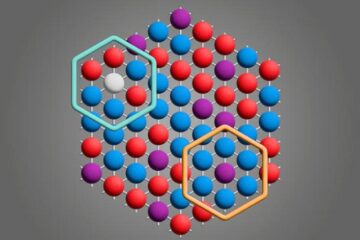Shark teeth are not harder than human teeth

The results of this research project are surprising: Although shark teeth contain 100% of a fluoride (i.e. the mineral which is also present in low concentrations in toothpastes), they are not harder than our teeth.
It is not by coincidence that the material and nano scientists have analyzed shark teeth. “I had wanted to do this for a long time”, underlined Matthias Epple, Professor for Inorganic Chemistry. “We have been investigating biomineralization at the UDE for several years. It is our main goal to determine the effect of inorganic minerals on biological systems, such as teeth, bones and seashells.
It is well-known that sharks have enamel which consists of the very hard mineral fluoroapatite. So far, no scientist has investigated this with high-end chemical and physical methods.” This was now done by Epple and his colleague from the MPIE Professor Dierk Raabe, together with Dr Oleg Prymak and Joachim Enax. The main part of the work was carried out at UDE. The MPIE was the institute, where especially the mechanical measurements took place.
For this study the teeth of shortfin mako shark and tiger shark were literally “taken apart” – for these shark species have different habits of eating their prey. By scanning electron microscopy and X-ray diffraction, the scientists analyzed the order, the size and the nature of the fluoroapatite crystals and determined the hardness of the teeth locally in small areas with mechanical measurements.
Epple and his co-workers showed that the chemical and crystallographic composition of teeth is similar in different shark species, although mako sharks “tear” into the flesh of their prey while tiger sharks “cut” it. The interior consists of the more elastic dentin; the outer part is the highly mineralized enamel.
Thus one might suppose that shark teeth are harder than human teeth. “The human enamel consists of a little softer mineral, hydroxyapatite, which is incidentally also present in bones.” By carrying out a comparative study with a human tooth, the scientists discovered something surprisingly new: It is just as robust as that of that fearful animal. “This is due to the special micro- and nanostructure of our teeth.
The crystals in human teeth have a special arrangement and they are “glued together” by proteins, which stops cracks from running through the whole tooth”, said Epple, who is also a member of the Center for Nanointegration Duisburg-Essen (CENIDE). Incidentally nature has equipped all creatures similarly: If teeth were fully mineralized they would be in danger of cracking upon mechanical shock.
The scientists are now continuing their research on shark teeth, e.g. on sharks of different age. With their experiments they are trying to imitate these structures to lay the foundations for novel dental prostheses. “It would be great if – sometime in the future – one could repair teeth with a material, which is more natural than today`s provisional solutions.”
Until then, humans will have to accept that sharks still have better teeth: They are replaced continuously and do not develop any cavities. “The reason might be the fluoroapatite and the revolving set of teeth which is always immersed in sea water”, explained Matthias Epple. “And finally: Sharks do not eat sugar.”
The research findings are published in the recent issue of the Journal of Structural Biology, 178 (2012). DOI http://dx.doi.org/10.1016/j.jsb.2012.03.012.
Further information: Prof. Dr. Matthias Epple, University of Duisburg-Essen, +49 0201/183-2413, matthias.epple@uni-due.de
Note for editorial staff: Prof. Epple will be out of office until August, 20th. The university press office can contact him. Please write to Ms. Ulrike Bohnsack, ulrike.bohnsack@uni-due.de
Media Contact
More Information:
http://www.uni-due.deAll latest news from the category: Life Sciences and Chemistry
Articles and reports from the Life Sciences and chemistry area deal with applied and basic research into modern biology, chemistry and human medicine.
Valuable information can be found on a range of life sciences fields including bacteriology, biochemistry, bionics, bioinformatics, biophysics, biotechnology, genetics, geobotany, human biology, marine biology, microbiology, molecular biology, cellular biology, zoology, bioinorganic chemistry, microchemistry and environmental chemistry.
Newest articles

Microscopic basis of a new form of quantum magnetism
Not all magnets are the same. When we think of magnetism, we often think of magnets that stick to a refrigerator’s door. For these types of magnets, the electronic interactions…

An epigenome editing toolkit to dissect the mechanisms of gene regulation
A study from the Hackett group at EMBL Rome led to the development of a powerful epigenetic editing technology, which unlocks the ability to precisely program chromatin modifications. Understanding how…

NASA selects UF mission to better track the Earth’s water and ice
NASA has selected a team of University of Florida aerospace engineers to pursue a groundbreaking $12 million mission aimed at improving the way we track changes in Earth’s structures, such…





















